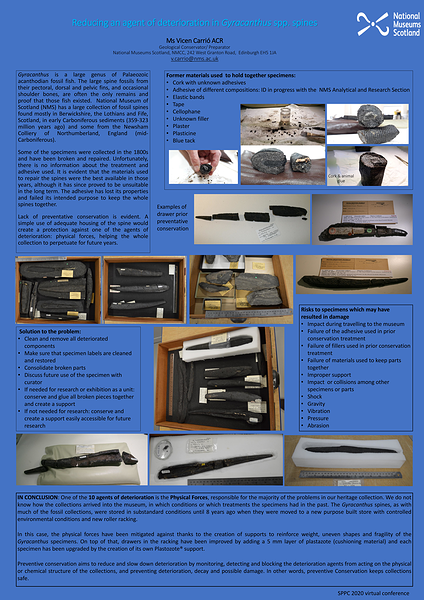 Author: Vicen Carrió
Author: Vicen Carrió
Natural Sciences Department, National Museum of Scotland, Scotland
Gyracanthus is a large genus of Palaeozoic acanthodian fossil fish. The large spine fossils from their pectoral, dorsal and pelvic fins, and occasional shoulder bones, are often the only remains and proof that these fish existed. National Museum of Scotland (NMS) has a large collection of fossil spines found mostly in Berwickshire, the Lothians and Fife, Scotland, in early Carboniferous sediments (359-323 million years ago) and some from the Newsham Colliery of Northumberland, England (mid-Carboniferous).
The spines measure from several centimetres to half a metre in length and from a few centimetres to around 8 cm in diameter. Since these spines represent about half the length of the body, the fishes probably ranged up to 1.2 m long.
Some of the specimens were collected in the 1800s and have been used for research and are normally broken and repaired. Unfortunately, there is no information about the treatment and adhesive used. It is evident that the materials used to repair the spines were the best available in those years, although it has since proved to be unsuitable in the long term. The adhesive has lost its properties and failed its intended purpose to keep the whole spines together.
Lack of preventative conservation is evident. A simple use of adequate housing of the spine would create a protection against one of the agents of deterioration: physical forces, helping the whole collection to perpetuate for future years.
